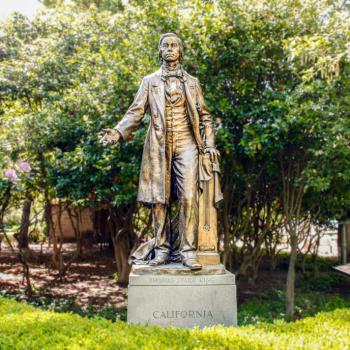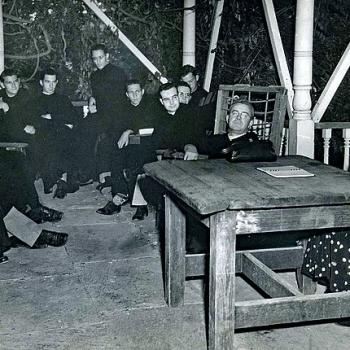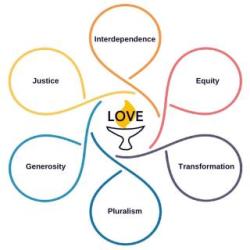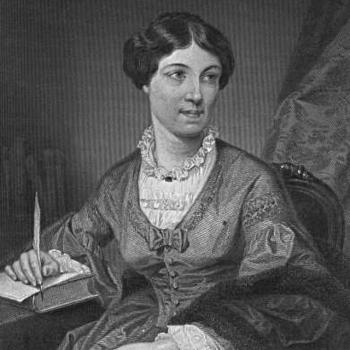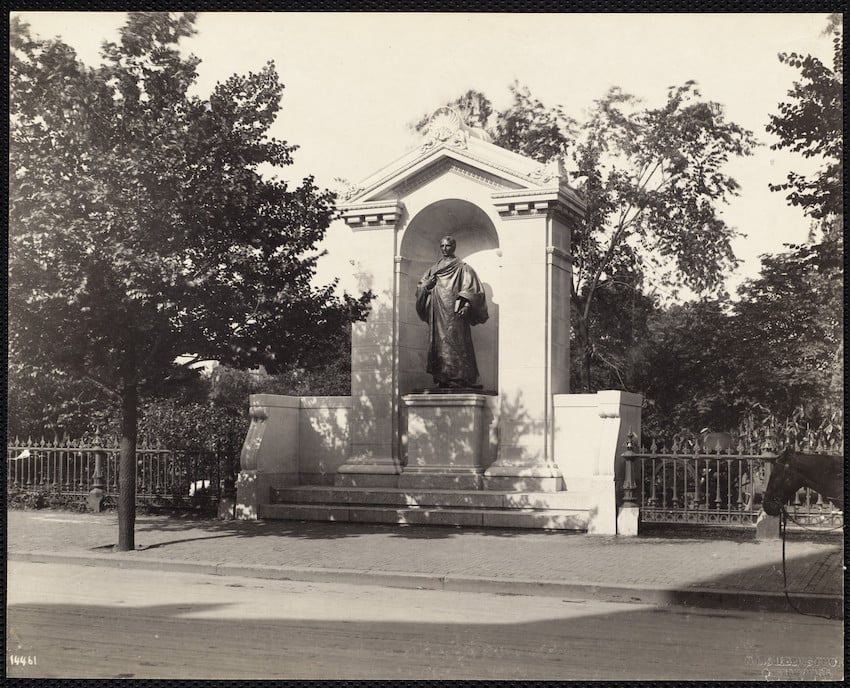
statue across from
Arlington Street Church
Two hundred years ago on the 26th of May in 1825, the disparate liberal congregationalists and few random others reluctantly but finally formed an official denomination, the American Unitarian Association.
The beginnings of this event were long in the making. The divisions between the Calvinist “orthodoxy” and the several strands of anti-trinitarian liberalisms trace back a good two decades with threads going back farther still. Most scholars seem to be of the view that Cotton Mather’s turn into the eighteenth century concerns with preachers too little concerned with the person of Christ was more a matter of his imagination than fact.
But throughout the mid and later eighteenth century a rationalist set was growing, and Ebenezer Gay of Hingham, who died in 1787 and Charles Chauncy of the First Church in Boston, who also died in 1787, were theological liberals and advocates of a rational approach to religion. And by the beginnings of the nineteenth century there were rationalist, Arminian, and Aryan ministers among New England’s Congregationalists, and congregants hungry for their messages.
In the first decades of the nineteenth century the Calvinist ministers of Massachusetts’ Congregational churches gradually stopped inviting pulpit exchanges with liberal ministers and in response the liberals began to find their exchanges exclusively with each other. These pulpit exchanges were the glue of the congregation connection. So functionally two churches were beginning to form.
Probably with William Ellery Channing’s sermon “On Unitarian Christianity” preached at the ordination of Jarad Sparks at Baltimore in May of 1819 (at which were present as witnesses deacons and the minister of the First Unitarian Church of Providence, which I would proudly serve not quite two centuries later), and in the following year with the court decision establishing the right of the larger “parish” who paid the bills to call a liberal minister over the objections of the actually attending “church” in Dedham, there was going to be no turning back.
In 1820 Dr Channing also led the formation of the Berry Street lecture which would prove a gather place for discussion and planning for liberal ministry. Journals were established. There was a growing lay activity and a strong sense of identity as Unitarian.
So the formation of some sort of institution however long delayed seemed inevitable. When they did organize, Dr Channing was offered the presidency, but declined. Instead the minister of the Worcester Unitarian congregation, Second Church, Aaron Bancroft was elected the first president of the Association.
Wary of denominational structures the AUA was originally conceived of as an organization of individuals. In fact it was a loose confederation of former congregationally affiliated churches, all of whom fiercely maintained congregational polity. There was no credal assertion, although the majority of these original members held various non-trinitarian and rationalist views. It would take forty years for a more coherent denominational structure to form.
In 1961 the American Unitarian Association would consolidate with the Universalist Church in America to form the Unitarian Universalist Association.
As a delightful sign of mysterious karma the British denomination closest to the AUA, the General Assembly of Unitarian and Free Christian Churches formed on the very same day.




